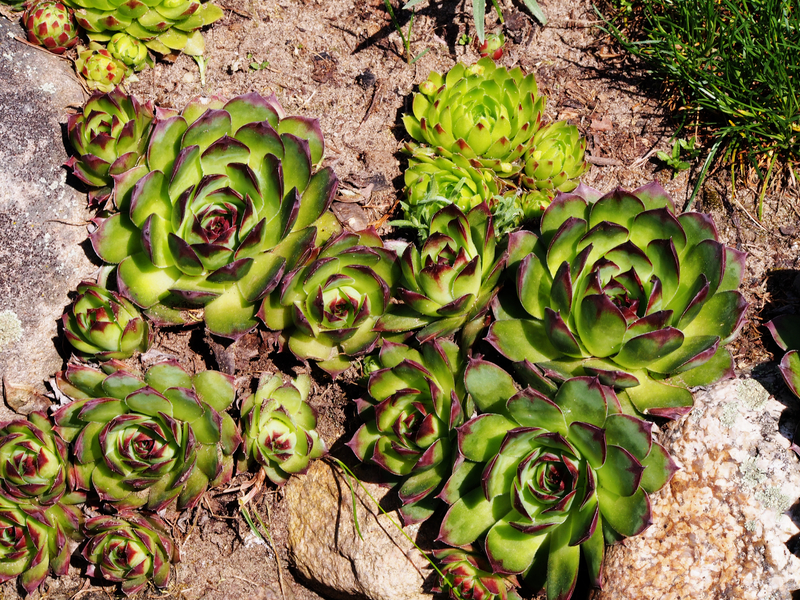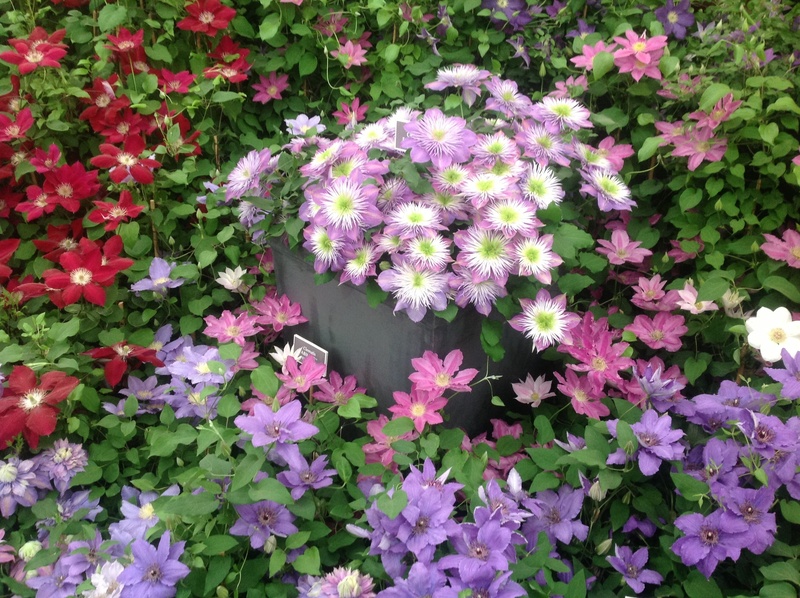A beginner's guide to vertical gardening
Posted on 27/06/2025
A Beginner's Guide to Vertical Gardening
Vertical gardening has emerged as an innovative and attractive solution for modern gardeners. If you've ever wished to have your own lush green plots but struggled with limited space, vertical gardens could be your perfect answer. This comprehensive A beginner's guide to vertical gardening explains the essentials, from initial planning to plant selection and maintenance--making your gardening journey seamless and rewarding.

What is Vertical Gardening?
Vertical gardening is the practice of growing plants upward instead of outward. This unique approach allows you to maximize small spaces by utilizing walls, trellises, and frames. It is ideal for urban environments or anyone with limited ground area, balconies, or rooftops.
Benefits of Vertical Gardening
- Saves Space: Ideal for balconies, patios, and even indoor areas.
- Enhances Aesthetics: Creates a living green wall that can beautify dull spaces.
- Improves Air Quality: Plants naturally purify air, contributing to a healthier environment.
- Increases Yield: Growing upwards often allows for more plants in less space.
- Reduces Pest and Disease Risk: Better airflow reduces fungal growth and pests.
- Reduces Strain: Less bending and kneeling--great for gardeners with mobility issues.
Getting Started with Vertical Gardening
If you are new to home gardening, the idea of growing upward may seem daunting. Here is an easy-to-follow roadmap to help you begin your vertical gardening journey.
Choose the Perfect Location
- Sunlight Requirements: Most vegetables and flowering plants need at least 6 hours of sun. Observe your chosen area throughout the day.
- Protection from Wind: Walls and fences not only support vertical planters but also shield delicate plants from harsh winds.
- Accessibility: Ensure you can easily water and care for your vertical garden.
Decide on a Vertical Garden Type
There are several types of vertical gardens to consider depending on your needs, space, and aspirations. Below are some popular choices:
- Living Walls: Also known as green walls, these are panels of plants grown vertically using hydroponics or soil.
- Trellises and Arbors: Popular for climbing vegetables and flowers.
- Hanging Gardens: Use vertical hooks, hanging pots, or baskets for trailing plants.
- Pocket Planters: Fabric or felt pockets attached to walls--ideal for herbs or salad greens.
- Pallet Gardens: Upcycled pallets can create rustic, structured vertical gardens.
Gather Your Materials
- Frame or Support Structure: E.g., trellis, wooden pallet, or metal grid.
- Planters: Pots, containers, felt pockets, plastic bottles, or DIY planters.
- Soil: Use high-quality, well-draining potting mixes.
- Plants: Choose based on sunlight, climate, and your culinary or aesthetic preferences.
- Irrigation System: Drip irrigation or a watering can for easy maintenance.
Best Plants for Vertical Gardens
Selecting the right plants is vital for a thriving wall garden. Here are some beginner-friendly and space-efficiency plants for vertical gardening:
Herbs and Edibles
- Basil
- Mint
- Parsley
- Lettuce
- Strawberries
- Chives
- Spinach
Ornamental Plants
- Petunias
- Ferns
- Ivy
- Philodendrons
- Succulents
- Pothos
Climbing and Trailing Plants
- Morning Glory
- Clematis
- Peas
- Tomatoes
- Cucumbers
Both edible and ornamental plants can thrive in a vertical garden, adding beauty and utility to your space. Consider a combination for a truly lush garden wall.
Building Your Vertical Garden: Step-by-Step
- Step 1: Select & Install Your Structure
- Choose your frame or support (wall grid, trellis, pallet, or modular system).
- Secure it firmly to your wall or dedicated space.
- Ensure it can bear the weight of soil, water, and plants.
- Step 2: Choose & Prepare Your Containers
- Install planters onto the structure.
- Drill or check for drainage holes to avoid root rot.
- Step 3: Fill with Potting Mix
- Use a lightweight, well-aerated mix for optimal drainage and moisture retention.
- Step 4: Plant Your Seeds or Seedlings
- Follow recommended spacing for plant type.
- Consider grouping plants with similar sunlight and watering needs.
- Step 5: Set Up a Watering Routine
- Check soil moisture regularly--vertical planters may dry out faster than ground gardens.
- For larger installations, consider a simple drip irrigation system.
- Step 6: Care and Maintenance
- Fertilize based on plant requirements.
- Prune plants regularly to encourage bushiness and prevent overcrowding.
- Check for pests and treat naturally if possible.
Creative DIY Vertical Garden Ideas
Looking for inspiration? Here are five innovative ways to create your vertical garden:
- Pallet Planter: Secure a wooden pallet to a wall, fill gaps with soil, and plant herbs or flowers.
- Hanging Shoe Organizer: Use pockets to plant herbs or succulents in a sunny spot.
- Upcycled Plastic Bottles: Cut bottles horizontally, hang them in rows, and fill with soil and greens.
- Tin Can Towers: Stack painted cans and grow small plants for rustic charm.
- Ladder Garden: Lean a wooden ladder and place pots on each step for multi-level gardening.
Maintenance Tips for Healthy Vertical Gardens
- Check Moisture Daily: Vertical gardens lose water quickly--keep soil moist, but not soggy.
- Fertilize Monthly: Use slow-release or liquid organic fertilizers for continuous growth.
- Prune Regularly: Remove dead leaves and prune to encourage healthy, dense growth.
- Inspect for Pests: Vertical gardens are less prone to pests, but still check often.
- Rotate Plants: If indoors, turn planters weekly for even sunlight exposure.
Common Mistakes to Avoid in Vertical Gardening
- Overcrowding: Ensure each plant has enough room for adequate root and leaf growth.
- Poor Watering Habits: Too much or too little water can stress plants--consistently check soil moisture.
- Weak Support Structures: Flimsy supports can collapse. Always use sturdy materials.
- Wrong Plant Selection: Avoid plants that are too heavy or too large for vertical setups.
- Neglecting Sunlight: Don't place shade-loving and sun-loving plants together.
Indoor Vertical Gardening: Bring Greenery Inside
Vertical gardens are not just for outdoors; they thrive indoors too! By using grow lights, wall-mounted pockets, and hydroponic panels, you can cultivate fresh herbs, air-purifying plants, or even microgreens in your home. Indoor vertical gardening adds life, improves urban air quality, and brings tranquillity into living or working spaces.
Tips for Indoor Wall Gardens
- Use Grow Lights: Supplements natural light--ideal for darker rooms.
- Focus on Easy Plants: Choose pothos, philodendron, or herbs like mint and basil.
- Monitor Humidity: Indoor air can be dry; mist foliage if needed.
Vertical Gardening for Apartments and Urban Spaces
Urban dwellers often face the greatest challenge: minimal outdoor space. However, vertical gardening in apartments revolutionizes how city residents can enjoy lush, productive gardens. Whether it's a balcony wall, windowsill, or a railing, vertical gardens maximize every inch, enhancing both aesthetics and quality of life.
- Install railing planters for herbs and flowers.
- Attach modular wall planters to balcony walls.
- Use freestanding vertical towers that can be placed indoors or outdoors.
Sustainable Practices for Vertical Gardeners
- Recycle & Upcycle: Use old containers, bottles, or fabric to create planters.
- Composting: Make your own compost to feed your plants naturally.
- Organic Pest Control: Use neem oil, companion planting, or beneficial insects to protect plants.
- Water Conservation: Install drip systems or self-watering planters to save water.

FAQ: Vertical Gardening for Beginners
How much maintenance does a vertical garden need?
Vertical gardens typically need regular watering, pruning, and occasional feeding. With an automated watering system, maintenance becomes even easier. Regular attention ensures your living wall remains vibrant and healthy.
Can I grow vegetables in a vertical garden?
Absolutely! Many vegetables thrive vertically--try tomatoes, peppers, lettuce, cucumbers, and peas. Make sure your support structure can handle the weight, and provide enough sunlight and nutrients.
How long do vertical gardens last?
With proper care and sturdy materials, a vertical garden can last for years. Replace plants as needed, check for wear on structures, and refresh soil annually to keep it thriving.
Conclusion: Flourishing Upwards--Your Vertical Gardening Journey
Vertical gardening offers limitless possibilities for urban dwellers, small-space gardeners, and anyone looking to add a lush, green touch to their environment. By following this beginner's guide to vertical gardening, you'll unlock a world of creative, sustainable growth. Start small, experiment with different plants and structures, and enjoy watching your garden reach new heights--literally!
Whether you're cultivating edible herbs, ornamental foliage, or a vibrant mix, vertical gardening embodies innovation and beauty. Let your first living wall or hanging garden inspire you to explore further and nurture your green thumb--upwards!

